
On the night of Aug 25/26, 2020, under fair conditions, I acquired some images of the dwarf nova V392 Per, which has been identified by Joe Patterson of the CBA as a good target.
You can find some basic information on this star at SIMBAD.
The main setup was:
Notes from the night:
The object is at
RA = 04:43:21.37 Dec = +47:21:25 (J2000)
A chart of the field based on pictures tonight is shown below. The size of the chart is about 20 x 20 arcminutes.

The chart below is from the AAVSO; see their full table with more information.
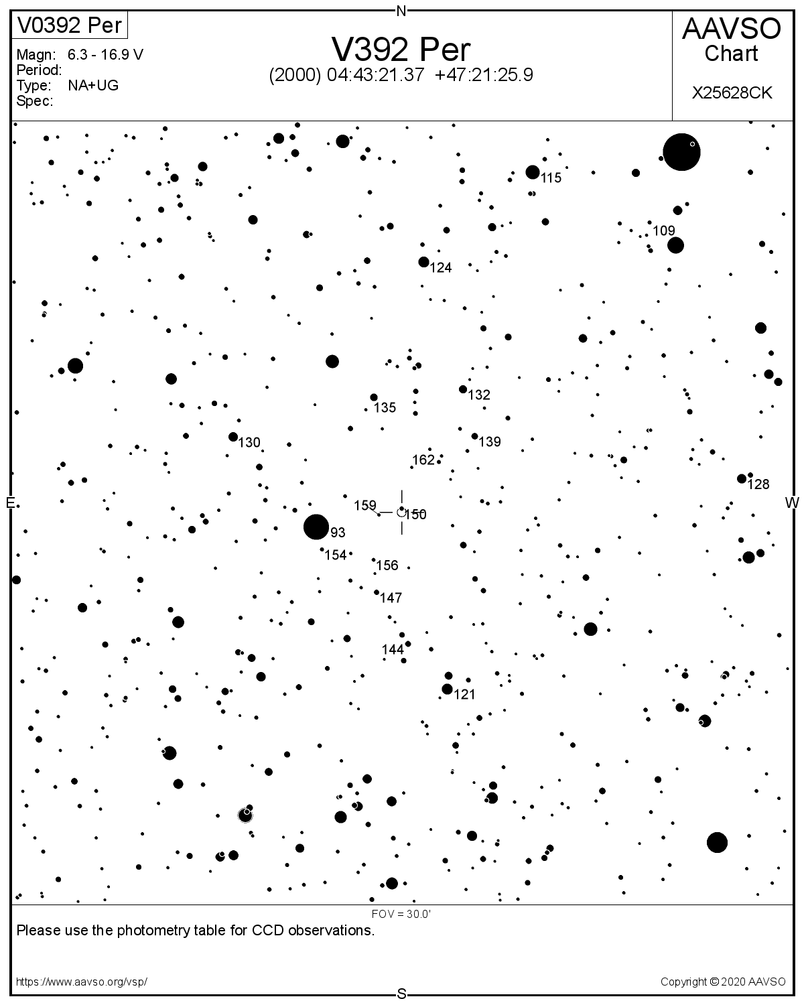
I used the star labelled "135", which is "C" on my chart, to convert my un-filtered measurements to V-band when I reported measurements to the AAVSO. On the other hand, for the measurements reported in the text file below, I used the star labelled "A" in my chart to calibrate the measurements to the V-band, using APASS as the source of the V-band mag.
Here's a picture of the TV with the finder's field of view when pointing at V392 Per:
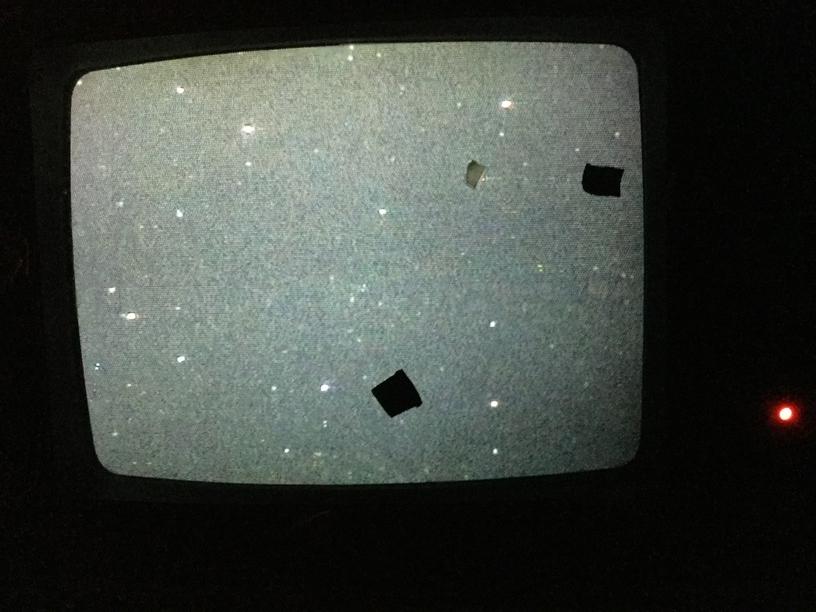
The dark current was the same as usual -- good.

The FWHM creeped up slowly over the 2.3 hours that I observed. Because the target is only 8 arcsec away from a nearby star, I used an aperture with a 3 pixel = 4.75 arcsec radius.
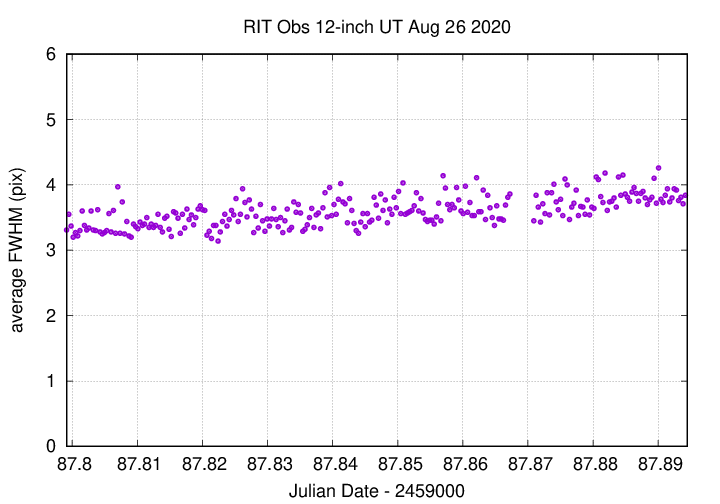
Clouds were present early in the run, but almost disappeared by the middle. The brief gap near the end was caused by my inattention; I neglected to re-start an observing sequence as soon as the first one finished. Sigh.
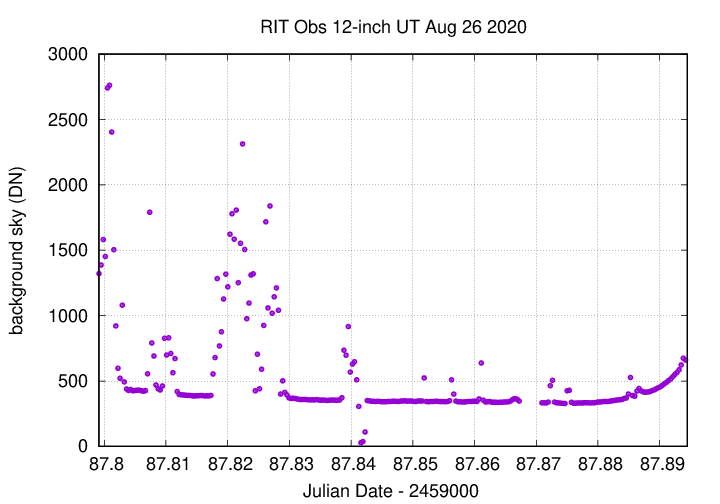

The graph of image zero-points shows a few outliers; most are due to trailing.
 Using aperture photometry with a radius of 3 pixels
(binned 2x2, each pixel is 1.25 arcsec, so a radius of 3.75 arcsec),
I measured the instrumental
magnitudes of a number of reference stars and the
target.
Following the procedures outlined by
Kent Honeycutt's article on inhomogeneous ensemble photometry,
I used all stars available in each image to define a reference
frame, and measured each star against this frame.
Using aperture photometry with a radius of 3 pixels
(binned 2x2, each pixel is 1.25 arcsec, so a radius of 3.75 arcsec),
I measured the instrumental
magnitudes of a number of reference stars and the
target.
Following the procedures outlined by
Kent Honeycutt's article on inhomogeneous ensemble photometry,
I used all stars available in each image to define a reference
frame, and measured each star against this frame.
Sigma-vs-mag plots show that the floor was about 0.009 mag, which is only mediocre. I marked the saturated stars as variable, so they would not affect the solution.

Here are light curves of the variable and the field stars.
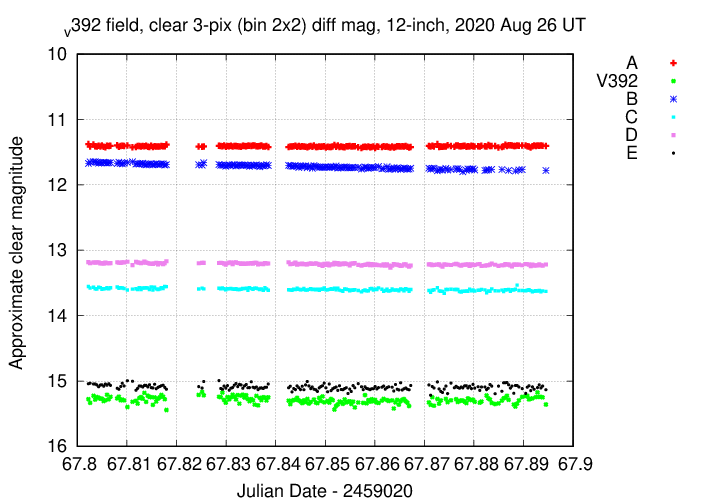
You can download my measurements below. A copy of the header of the file is shown to explain the format.
# Measurements of V392_Per made at RIT Obs, UT 2020 Aug 26, # in fair conditions, # by Michael Richmond, # using Meade 12-inch LX200 and ATIK 11000. # Exposures 20 seconds long, clear filter. # Tabulated times are midexposure (FITS header time - half exposure length) # and accurate only to +/- 1 second (??). # 'mag' is a differential magnitude based on ensemble photometry # using a circular aperture of radius 3 pix = 3.8 arcseconds. # which has been shifted so TYC 3347-1110-1 has mag=11.409 # which is its V-band magnitude according to APASS. # # UT_day JD HJD mag uncert Aug26.30222 2459087.80222 2459087.80107 15.277 0.052 Aug26.30256 2459087.80256 2459087.80141 15.335 0.047 Aug26.30324 2459087.80324 2459087.80209 15.224 0.045
Last modified 8/27/2020 by MWR.